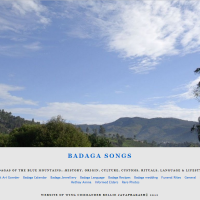The biggest and most important festival of Badagas
will be celebrated on MONDAY, the 28th Dec 2015.
The Hethe(y) Habba festivities start on the 21st December and culminates on 28th Dec 2015 with the main function.
~~~~~
[Most of the info below is reproduced from the page Hethe Habba]
‘HETHAI HABBA’ is the biggest festival of Badagas
Hethai Habba is always on the first MONDAY (SOVARA), the most sacred day of Badagas, after the full moon (paurnami – HUNNAWAY ) that falls in (Tamil) Margazhi month, that is the 9th day after eight days of ‘Kolu’. This year [2015] the main Hethai Habba will be celebrated on 28 Dec 2015.
Hethe Habba does not fall on a particular day of a calendar month every year [ like X-Mas is always on the 25th December] & it is usually celebrated in December or January.
Every year, from various hattis the male members in their traditional dress [white turban – MANDARE, MUNDU & Badagaru SEELE along with the family DHADI (stick)- see the photo] proceed to Hethai Gudi (mane) in Beragani/Pedduva on the preceeding FRIDAY by foot. Every house in the hatti has to pay five HANA (25paise coin) in a ceremonial function called HANA KATTODU in the village SUTHUKALLU – a triangular stone under a Bikke mora/ Olive tree that is worshipped – see the photos below). This money (coins) – KANNIKE – tied in a white cloth will be handed over to the Hethai temple at Beragani/Pedduva.
The villagers will give a warm and respectful send off to those proceeding to Hethai Mane (- they would have followed a very strict code of conduct like not eating non vegetarian food or consuming alcohol). As they (including many young boys) proceed away from the village, women spread white sheets (mundus) on the path and all those (men, women & children) not proceeding will prostrate ( adda bubbadu ) and they will be blessed ( harachodu ). The unique (BadagaATHIKKODU ) ” Ye Ha Ho ” will be loudly uttered.
As you listen to this ‘ Ye Ha Ho ‘ you can feel goose pimples rising, eyes welling up with tears and the heart filled with thoughts of the ALL POWERFUL HETHAI with both happiness and awe.
These men will return back to their Villages on the next monday – THE HETHAI HABBA DAY – to a grand and ceremonial welcome after attending to various rituals / ceremonies at Beragani & Gasu gui. Usually there will be ‘ Anna Dhana ‘
Every BADAGA (male & female) must visit Hethai Mane gudi (temple) either at Beragani or Pedduva at least once to experience and get the blessings of HETHAI during this fantastic festival called Hethi Habba.
The visit can be on any day during the ‘kolu’ period that is from 21-12-2015 to 28-12-2015 this year though the grand ‘finale’ is on the 28th Dec,2015 when lakhs of Badagas in their whites will throng these holy places with cars and other vehicles parked for a few kms on the all available roads. There will be many more thousands of non Badaga devotees celebrating the same in their hattis also.
EVERYONE WILL BE SERVED FOOD ( HITTU ).
This is the only day the deity – HETHAI – will be shown to the public for a few seconds
In the olden days the diary products where stored here. It has the churing stick or the MATTHU which is attached to a pole firmly buried to the ground. This was used for churning milk and only the men had the rights to enter this place. The diary products were stored in THATTAE (mud pots) inside the HAGOTTU. Since Hagottu is treated as sacred, it is smeared with cowdung every Mondays with water gathered from springs (HUTTU NEERU) only.
The HETTHAI DHADHI is kept in the HAGOTTU inside a bamboo that has been bored along its length so that the DHADHI can fit in. The DHADHI is taken out once a year and cleaned with salt & tamarind and then taken to the HETHAI MANE during the festival and kept back in its place as soon as the festival is over. Any outside materials that are taken into the HAGOTTU are ’purified’ by applying camphor vapour (KAPPARANA AATHODHU)).
Here, mention must be made about HONE used for milking of buffaloes (nowadays vessels or buckets are used). This container/sort of vessel is a broad hollow bamboo mearuing about 2 feet in length with the lower end closed. Ladies during their periods are not allowed into the room that holds the HAGOTTU. Ladies also, usually, do not eat inside the OGAMANAE where the HAGOTTU is present’.
In olden days, every household had a Hethai Dhadi of its own. Prof.Paul Hockings mentions that HAGOTU is the milk churning place, adjoining kitchen, inside the house – a place of worship, into which the women are not allowed to enter. But Dodda Mane in a hatti must have a Hogotu and if it is absent, the front portion of the kitchen is still considered sacred and for men only. Also called OGASU by Lingayat and Haruva Badagas.
There is a DHODDARU SHULOKA [Badaga proverb] which says,
’sappode sare, hagotu dura’ meaning
‘The milk vessel is nearby, but the churning place is far off’
The villagers give a warm and respectful send off to those proceeding to Hethai Mane (- they would have followed a very strict code of conduct like not eating non vegetarian food or consuming alcohol). As they (including many young boys) proceed away from the village, women spread white sheets (mundus) on the path and all those (men, women & children) not proceeding will prostrate ( adda bubbadu ) and they will be blessed ( harachodu ) by those ‘hethai kararu’. The unique Badaga ATHIKKODU – ” Ye Ha Ho ” will be loudly uttered.
As you listen to this ‘ Ye Ha Ho ‘ you can feel goose pimples rising, eyes welling up with tears and the heart filled with thoughts of the ALL POWERFUL HETHAI with both happiness and awe.
They will attend to many ceremonies & functions at Hethai Mane – Beraganni /Pedduva/Gasu Gui .
These men will return back to their Villages on the next monday – THE HETHAI HABBA DAY – to a grand and ceremonial welcome. Usually there will be ‘ Anna Dhana ‘ at their villages.
Every Badaga must visit HETHAI GUDI (temple) either at Beragani or Pedduva at least once to have an unique experience and get the blessings of HETHAI during this fantastic festival called Hethi Habba.
The visit can be on any day during the ‘kolu’ period when lakhs of Badagas in their whites, throng these holy places and their cars and other vehicles would have been parked for a few kms on the all available roads. There are many more thousands of non Badaga devotees also.
EVERYONE WILL BE SERVED FOOD ( HITTU ).
This is the only day the deity – HETHAI – will be shown to the public for a few seconds.
***********************
R. Ramachandran of Kekkatti gives an interesting tit bit : ‘The Hethai Dhadi, considered very sacred, is always kept in the sacred corner called HAGOTTU, which is situated in the OGA MANE [inner room where the kitchen is located] adjoining EDA MANE.
Dear Sri JP
Seem to have covered a major part of the processes of the Hethai Habba. To add to this library on Hethai I am presenting a few lines on HAGOOTU. I hail from Ketti Kekkatty and one rare site in a badaga house is the presence of HAGOOTTU . This is basically a pooja room as we call it these days, but this is the only place a HETHAI DHADI is kept in a house other than the temples. And I am proud to say that we have a HAGOOTU in my house with the HETHAI DHADI.
Hagottu is situated in the OGAMANAE which is the sacred corner of any Badaga house. In the olden days the diary products where stored here. It has the churing stick or the MATTHU which is attached to the pole firmly burried. This was used for churning milk and only the men had the rights to enter this place. The diary products were stored in THATTAE ( mud pots) inside the HAGOTTU. Since this is treaded as the sacred place this is smeared with cowdung every week on Mondays with water gathered from the springs only. The HETTHAI DHADHI is kept in the HAGOTTU inside a bamboo which is bored along its height so that the DHADHI fits in. The DHADHI is taken out once a year and cleaned with salt and tamarind and then taken to the HETHAI MANAE during the festival and kept back in its place as soon as the festival is over.
Any outside materials that are taken into the HAGOTTU are made pure by applying camphor vapour (kappurana aathothu). Here wish to mention the HONAE the container during milking of buffaloes (nowadays vessels or buckets are used). This is a broad bamboo mearuing about 2 to 3 feet hollow inside except the lower end. Ladies during their periods are not allowed into the house that holds the HAGOTTU. Ladies also do not eat inside the OGAMANAE which the HAGOTTU is present.
R.Ramachandran
Kekkatty.
~~~~~~~~~~~~~
I have added a few photos taken at Pedduva Hatti quite some years back from my archive. The photos of Hubbathalai Hethai Gudi ‘Suthu Kallu’ and the present ‘Head Pujari’ of Pedduva were taken in December, 2006) when Hetha Mane people were invited to Hubbathalai Village prior to Hethai Habba as is the tradition.
On Hethai Habba day at Pedduva
The following snaps were taken at Hubbathalai Village on 15 Dec 2006
Ex – Head Pujari Krishna Gowder
by Dr.Rams
[The following lines (slogan with an outstanding hum!!??) will first be used to call our great hethey during hethey-habba.
We, the badagas use this slogan at the beginning to call hethey in a “devvaaduva” occasion especially during “Hethey habba” season. Although we use this in other hatties during “poorthi”, an occasion in which hethey disciples/sishyas will be called, we normally use this in Hethey maney during the aforementioned occasion and we could indeed feel something beyond….. at that particular moment. Further, we use this only in “Hethey devvaaduva” occasion unlike “hethey bhajans”, which we use in all the temples in various hatties during “pujas”].
Eay amma ellitha idhey-neyyy…engaa maayaadha kanney-yeyyy
Eay amma ellitha idhey-neyyy…engaa neleyaadha kaathi-yeyyy
Eay amma ellitha idhey-ney…engaa eeraney masi-yey..ey – Aa eayyy
Eay amma thuppadha dheevigeyyy…thayey kachidheyoney..ey
Eay amma dhoopadha ogeyaaa…thayey ogathidheyo-ney..ey
Eay amma dhukka ondhunaaa…thayey theera bhaliney..ey – Aa eayyy
Eay amma maaraa jalliyaaa…thaayey mandeya bhuttu-nee..ee
Eay amma magaala kaayaaa…thaayey kondeya katti-nee..ee
Eay amma makkava kaappa jaama manakkana bhaali-ney..ey – Aa eayyy
Eay amma baladha kaiyaaa…thayey imbi idathu-nee..ee
Eay amma edadha kaiyaaa…thayey bhethu idathu-nee..ee
Eay amma bhevara ondhuna thayey eaga-bhaliney..ey – Aa eayyy
Eay amma bettadha janavuuu…thayey bhandhidharey-ney..ey
Eay amma seemeya janavuuu…kaathu nidhidharey-ney..ey
Eay amma sinnadha maathaaa…neenu thoarabhali-ney..ey – Aa eayyy
Eay amma makka illadhaaa…thayey mangeya rella-ney
Eay amma madiluga acheyyy…kaethu bhandhidharey-ney
Eay amma madiluga acheyyy…bhandhu kodabhekku nee-yey..ey – Aa eayyy
**************
| One of the biggest regrets I have is that I have not gone to “Hethai ” – going on the ‘offical’ pilgrimage as part of Hethe Kararu of Hubbathalai hatti to Bergani and Pedduva. But I did have the honour and pleasure of being part of the ceremony at Peddhuva and also when Hethay Mane people had comet to Hubbathalai and Kundha Ketchigatti.
During Hethay Habba [season] One of the important rituals is ‘DEVADODHU’ and now I can recollect the invocation of Hethay – that is ‘Hetheya Koruchuvadhu’ as Dr.Ram, so nicely, explained. The function starts in hattis in the evening whenever the Hethai Mane people – the villagers, including the PUJARI from either Beraganni or Peddduva – are invited. They are ceremoniously welcomed and taken to the Suthugal – near the temple. Thuppadhittu / Ennae’hittu is served and people sit around a fire. |
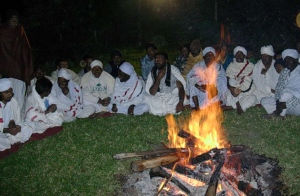
The tempo is slowly built up. One or two persons from the Hethe Mane start playing the Bugiri after invocation – Hetheya Koruchuvodhu.
As I am writing this I am getting goose pimples – the hair rising in the back of the neck (மெய் சிலிர்க்கிறது) for the occasion is so solemn and the atmosphere is thick with anticipation. The bugiri may look very simple but the musical notes played on that by the experts can make any one forget this world and transport to another world. The music is ‘OH ennu Hethai, Odee Baali’ or as Dr.Ram has mentioned.
The Poojari or the ‘chosen one ‘ with his uncut long hair and without the shirt starts swaying to the music in standing position and obviously in a trance.
When the time comes, he gushes forth a scream and the music stops. Now he is truly POSSESSED by HETHAY and starts saying ‘vaakku’ – predictions. It may be general to the hatti or specific to a person or family. He chooses him/her/them by throwing an ’embai – lime’. The person so chosen, kneels before th PUJARI and addresses him as HETHAY.
Once HE[THEY] finishes, at a signal the music starts again and the process continues.
Incidentally, in ‘devvadodhu’ – the Pujari or the other Chosen ones speak while in trance in BADAGA only till midnight. If it continues after that the ‘predictions’ are given in what sounds like Halaya Kannada.
:::::::::::::::::::::::::::::::::::::::::::::::::::::::::::
The booklet ” Sri Hethaiammal sarithiram ( History of Sri Hethai Ammal) ” written by Mr. N.N. Pokka (Bogga ?) Madha Gowder, is indeed one of the rare books written on ‘Hethai ‘, the revered deity of Badagas of the Nilgiri Hills in Southern India, some seventy/eighty odd years ago.
Given in its original form in Tamil in these pages
Wherever possible, I have tried to give the translation in English
A lot of friends, the latest being MEERA GOPAL, have been asking me to send them the ‘Complete History of HETHAI AMMA’.
You can read and download the same from here
The download size is about 3.8MB. Please remember that you should have installed one of the (free) pdf readers like FOXIT, PDF -XChange Viewer, Adobe Reader on your system to open and read the downloaded file !
————————————-
Hethe Amma, the purest one, in your blessings lie our well being !
Madekke mannoondha aaleyu, adhu thirigi mannoo aagha
[Even though a pot has been made out of clay, it cannot become clay again]
Thuppa benne endha aaleyu, adhu thirigi benne aagha
[Clarified butter (nei in Tamil), though made out of butter, cannot become butter again]
Jenu hoo endha aaleyu, adhu thirigi hoo aagha,
[Honey, that comes from flowers, cannot become flowers again]
Holladha vakka Hethe Mane ga hodha maele, thirigi holladhavakka aagharu
[After going to Hethai Temple, ‘bad’ people cannot remain bad]
[from silver jubilee souvenir 1993, BWA-Madras]
May HETHAI Amma bless us !
Discover more from Badagas of the Blue Mountains
Subscribe to get the latest posts to your email.



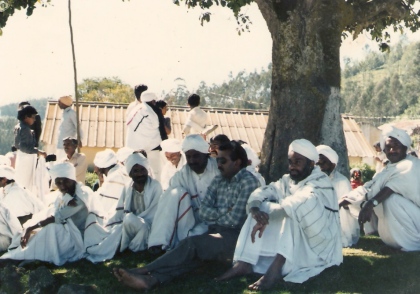
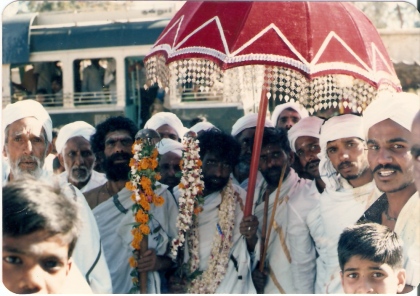
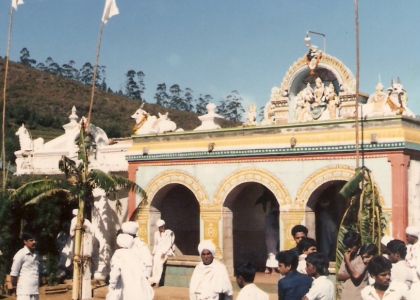
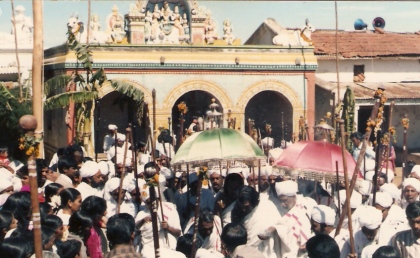
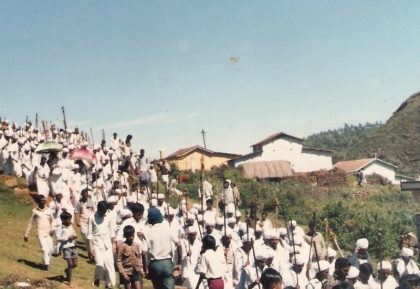
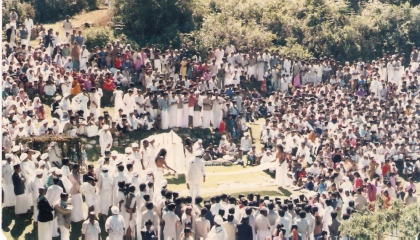

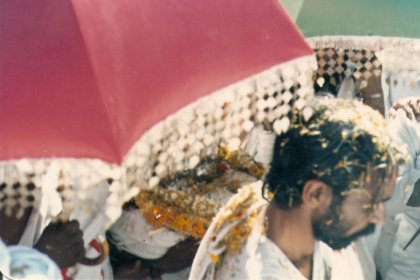
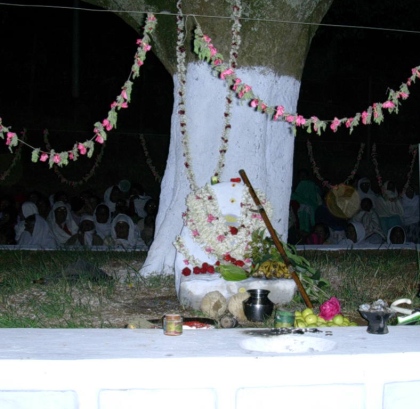
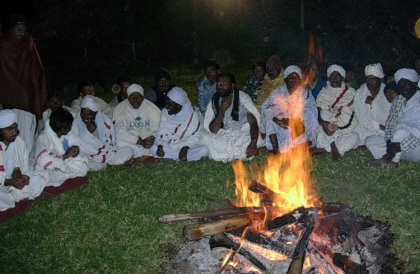
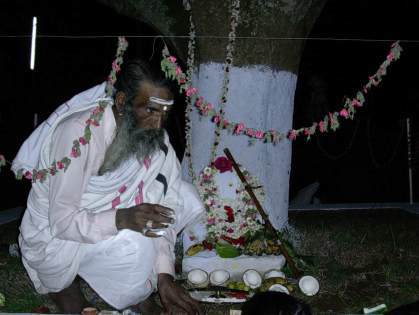
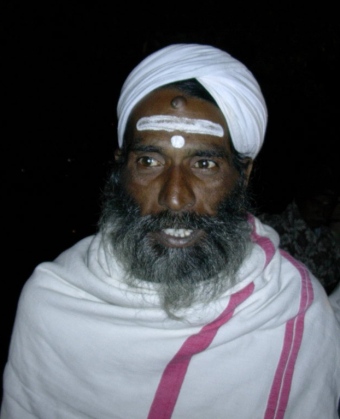







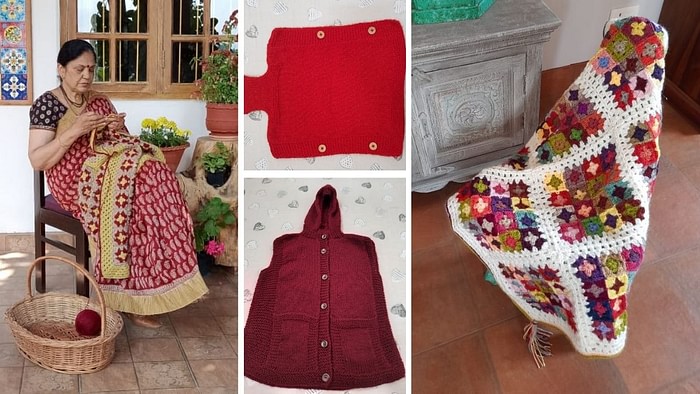

 Mookuthi
Mookuthi  Chinna
Chinna 






 ==
==
